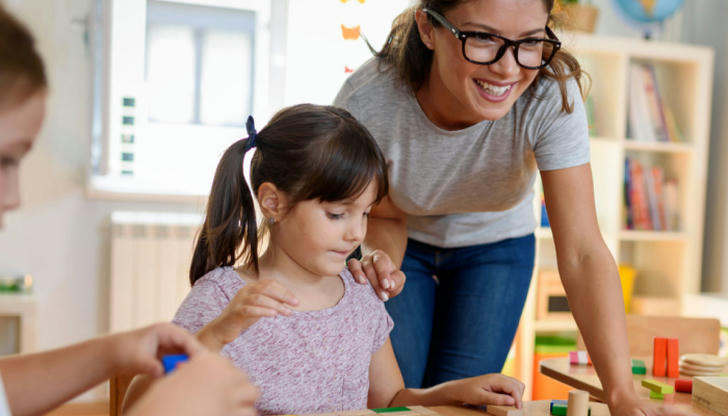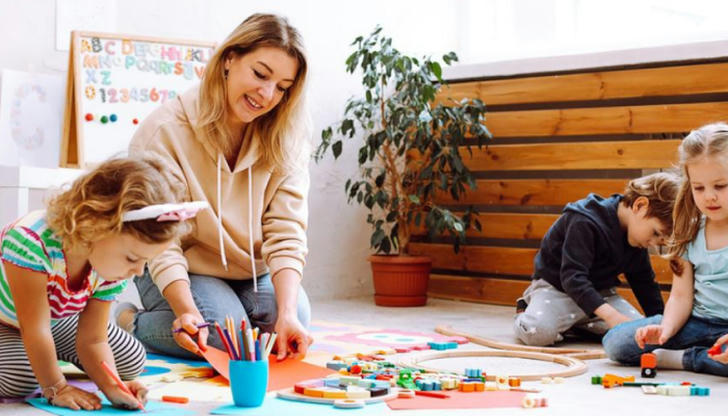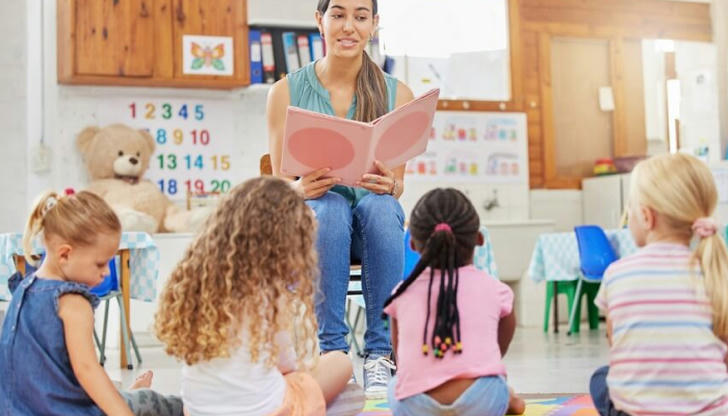The Evolution and Impact of Modern Early Childhood Education

Early childhood education (ECE) refers to the period of learning that occurs from birth to age eight, a time when a child’s brain develops at an extraordinary rate. The quality of education provided during these formative years has a significant impact on a child’s long-term academic, social, and emotional development. Over the years, the approach to ECE has transformed dramatically, evolving from traditional, teacher-centered methods to more innovative and child-centered pedagogies. Today, modern ECE emphasizes a holistic approach that caters to cognitive, social, emotional, and physical development, preparing children not just for school, but for life. The aim of this essay is to analyze the key features, trends, and theories of modern early childhood education. It will explore how this field has evolved, the factors influencing its growth, and the challenges that continue to shape early education systems worldwide. Additionally, the essay will examine the positive impact of modern ECE on children’s development and society as a whole.
The Importance of Early Childhood Education

Research has consistently shown that the early years of life are crucial for the development of a child’s brain. According to the National Institute for Early Education Research (NIEER), a child’s brain forms about 1,000 new neural connections every second during the first few years of life, laying the foundation for all future learning. This is why the experiences and education children receive in their early years are so critical. High-quality early childhood education has the potential to improve long-term educational outcomes, decrease the achievement gap, and increase a child's chances of success in life. Children who attend quality preschool programs tend to perform better in school, are less likely to drop out, and are more likely to succeed in their careers. Furthermore, ECE plays a vital role in social-emotional development, fostering skills such as empathy, self-regulation, and communication, which are crucial for forming relationships and succeeding in the modern world.
Modern Trends in Early Childhood Education
The landscape of early childhood education has evolved significantly over the last few decades. Several trends have emerged as educators, researchers, and policymakers work to create more effective and inclusive learning environments for young children. Some of the key trends shaping modern ECE include:
- Play-Based Learning Play-based learning has emerged as one of the most prominent trends in modern early childhood education. The idea is based on the principle that children learn best when they are actively engaged in activities that they find enjoyable and interesting. Play not only fosters creativity and imagination but also supports cognitive and language development, problem-solving skills, and social interaction. In a play-based learning environment, children explore, experiment, and learn through structured or unstructured play. Teachers support this process by providing materials and guidance while encouraging children to express themselves, collaborate, and solve problems. This approach recognizes that play is the natural way children learn and develop, helping them to build the skills they need for future academic success. For example, in a classroom that uses play-based learning, children might work with blocks to build structures, creating opportunities to explore basic math concepts like symmetry, balance, and measurement. At the same time, they engage in cooperative play, learning to communicate, negotiate, and resolve conflicts. Research has shown that play-based learning not only improves academic skills but also enhances children's social, emotional, and motor development.
- Child-Centered Learning Approaches Modern early childhood education places significant emphasis on child-centered learning, which focuses on the individual needs, interests, and developmental pace of each child. Rather than following a one-size-fits-all approach, child-centered education allows children to take an active role in their own learning, making choices about activities and exploring topics that interest them. This approach is based on the understanding that children are naturally curious and eager to learn, and that providing opportunities for self-directed learning can enhance their motivation and engagement. Educators act as facilitators rather than lecturers, guiding children through their learning experiences and helping them make connections between new information and their prior knowledge. One popular example of child-centered learning is the Montessori Method, which encourages children to explore materials and concepts at their own pace. In a Montessori classroom, students are free to choose activities that align with their interests, and the environment is designed to foster independence, creativity, and critical thinking.
- Social and Emotional Learning (SEL) In the past, early childhood education primarily focused on cognitive development and academic learning. However, in recent years, there has been a growing recognition of the importance of social and emotional learning (SEL). SEL involves teaching children how to manage their emotions, build positive relationships, solve problems, and develop self-regulation skills. Incorporating SEL into ECE programs can lead to improved outcomes in behavior, learning, and mental health. When children develop strong emotional intelligence, they are better able to handle stress, communicate effectively with others, and engage in productive social interactions. SEL programs help children build self-awareness, empathy, and resilience—skills that are critical in navigating both academic challenges and social situations. Many modern ECE programs now include SEL components as part of the curriculum. Activities such as group discussions, role-playing, and mindfulness exercises can help children develop these essential skills from a young age. The benefits of SEL extend beyond the classroom, as children who participate in SEL programs are more likely to show better academic performance, positive attitudes, and fewer behavioral issues.
- Inclusivity and Diversity Another important trend in modern early childhood education is the emphasis on inclusivity and diversity. As societies become increasingly multicultural, ECE programs are recognizing the need to create environments that are welcoming and respectful of all children, regardless of their race, culture, language, or ability. Inclusive early childhood education involves providing learning opportunities for all children, including those with disabilities or special needs. This approach ensures that every child has access to high-quality education and is given the tools they need to succeed. In inclusive classrooms, educators use differentiated instruction to accommodate the diverse learning styles, abilities, and interests of their students. This might involve using visual aids, providing extra support, or modifying activities to meet the needs of children with different abilities. In addition, early childhood education programs are increasingly focusing on promoting cultural awareness and celebrating diversity. Through activities such as storytelling, multicultural art, and international festivals, children learn about different cultures, traditions, and perspectives. This approach helps foster a sense of respect, understanding, and appreciation for diversity, preparing children to thrive in a globalized society.
- Technology Integration With the rapid growth of technology, the role of digital tools in early childhood education has become a point of discussion. While some critics argue that excessive screen time can be detrimental to young children, many educators and researchers see the potential for technology to enhance learning when used appropriately. Modern early childhood classrooms often incorporate technology in ways that complement traditional learning activities. For example, interactive whiteboards, educational apps, and digital storytelling tools can help children engage with content in dynamic and innovative ways. Educational technology can also support differentiated instruction, offering personalized learning experiences that cater to each child’s unique needs. However, it is crucial that technology in the classroom is used in moderation and is integrated thoughtfully into a well-rounded curriculum. It should never replace face-to-face interactions, physical play, or outdoor activities, but rather serve as a supplementary tool that enhances learning experiences and encourages creativity.
Theoretical Foundations of Modern Early Childhood Education

Several key educational theories and frameworks underpin modern early childhood education. These theories guide the design and implementation of ECE programs, providing insights into how children learn and develop.
- Piaget’s Theory of Cognitive Development Jean Piaget’s theory of cognitive development has had a profound influence on early childhood education. Piaget believed that children actively construct their knowledge through interaction with their environment, progressing through stages of development as they acquire new cognitive skills. According to Piaget, early childhood is a critical period for the development of logical thinking, problem-solving, and understanding cause-and-effect relationships. Piaget’s ideas have led to an emphasis on hands-on learning, where children are encouraged to explore their surroundings and engage in activities that promote cognitive growth. In practice, this means that modern ECE programs focus on providing children with opportunities to experiment, explore, and discover concepts on their own.
- Vygotsky’s Sociocultural Theory Lev Vygotsky’s sociocultural theory emphasizes the role of social interaction in cognitive development. Vygotsky argued that children learn best when they collaborate with others and engage in shared activities. His concept of the Zone of Proximal Development (ZPD) suggests that children can achieve higher levels of learning with guidance from a more knowledgeable person, such as a teacher or peer. Vygotsky’s theory supports the idea of collaborative learning, where children work together to solve problems and share ideas. In modern ECE classrooms, this might include group activities, peer interactions, and teacher-guided discussions that promote active learning and social development.
- Reggio Emilia Approach The Reggio Emilia approach is an innovative philosophy of early childhood education that originated in Italy. It views children as capable, competent learners who are actively involved in their own learning process. The approach emphasizes the importance of the environment as a “third teacher,” encouraging exploration, creativity, and critical thinking. Reggio Emilia classrooms are designed to be aesthetically pleasing and stimulating, filled with open-ended materials that encourage hands-on learning. The approach also promotes collaboration between children, teachers, and families, with the belief that learning is a social process that is best supported through partnerships.
Challenges and Opportunities in Modern Early Childhood Education
While modern early childhood education has made tremendous progress, there are still several challenges that need to be addressed. Some of the key challenges include:
- Access and Equity Despite the benefits of high-quality early childhood education, access remains a significant issue, especially for children from low-income or marginalized communities. Ensuring that all children, regardless of their socioeconomic background, have access to quality early education is essential for closing achievement gaps and promoting social equity.
- Teacher Training and Professional Development The success of modern early childhood education depends heavily on the quality of the teachers. Educators need to be well-trained in child development, teaching strategies, and classroom management. Professional development programs are essential to help teachers stay current with best practices and evolving educational trends.
- Balancing Tradition with Innovation Modern ECE programs must strike a balance between traditional educational methods and the integration of new technology and teaching strategies. While innovation is important, it is equally important to maintain the value of hands-on learning, play, and face-to-face interactions that have long been recognized as essential for young children's development.
Conclusion
Modern early childhood education is characterized by a shift towards more child-centered, inclusive, and developmentally appropriate practices. With an increased focus on play-based learning, emotional and social development, and the use of technology, today’s early childhood programs are better equipped to meet the diverse needs of young learners. However, challenges related to access, equity, and teacher training still need to be addressed to ensure that all children have the opportunity to benefit from high-quality education during these critical years. As society continues to evolve, so too will the field of early childhood education. The ongoing commitment to improving ECE programs will ensure that future generations of children are well-equipped to succeed in school and beyond, laying the foundation for a brighter and more equitable future.
